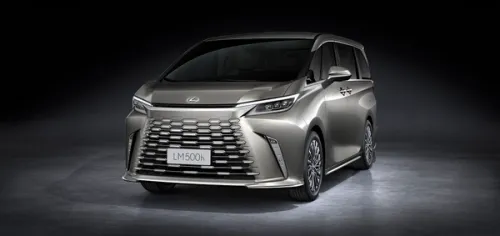Lexus GS250 Luxury Review: Rising Sons
The entry-level Infiniti saloon faces its toughest challenge yet from the new base model Lexus GS. Raymond Lai decides which is the more convincing entry-level Japanese executive saloon.



Despite having the most convincing interior of the three Infiniti models currently offered here in Singapore, the M saloon’s cabin can’t quite match up to the Lexus’ well-executed and well-appointed interior. Up front in the Lexus, the driving environment is dominated by the generously sized centrally mounted 12.5-inch display screen that is large enough to support simultaneous, split-screen viewing of a large map display, plus audio, climate or other vehicle information. The GS’s Remote Touch Interface (RTI) operating system is improved over earlier ones in the RX and CT but the cursor for the menus and functions is still a tad hard to control while the main menu itself is far from intuitive to navigate. Sitting below the main display screen on the dashboard is the first application of an analogue clock in a Lexus that looks far better than the nasty and cheap looking seven-segment LCD digital clock in other Lexus models. The instruments though, can do with more thought in their design – they look too similar to the IS’s.


Perceived quality and luxury levels are exceptionally high for a Lexus and the executive saloon class, only the Audi A6 surpasses the GS when it comes to cabin ambience and overall quality. Unlike its predecessor, the new model uses little Toyota switchgear, which only minor ones like the cruise control stalk shared with Toyota models – the soft touch feel of the exposed surfaces and the new bespoke switchgear certainly makes the GS’s cabin feel and look special when compared to those in other Lexus models. On its own, the Infiniti cabin is no bad place to be in, especially when considering that the materials on the exposed surfaces are of the highest quality and the new switchgear also look and operate better than in the other Infiniti models that feature older switchgear. The ventilated front seats are comfortable and supportive thanks to the wide variety of electrical adjustments offered. The factory fitted leather looks and feels convincing, further giving that sense of luxury and value to the M’s cause.


The benefits of the Infiniti’s 50mm longer wheelbase shows in the rear where it offers a tad more leg and knee room than in the Lexus. Rear passengers will also find that there is sufficient headroom in both cars. The M25 also offers the slightly better shaped boot hanks to less intrusions from the wheel arches. This is a far cry from the M35h’s miniscule luggage area, which is mostly taken up by the hybrid system’s batteries.


Like the rest of the range, the GS250 is available in a variety of trim levels, including in sporty F sport and superbly equipped Luxury forms like the car tested here. In Luxury trim, the GS250 is every bit as well equipped as higher end versions of the GS350. The high levels of kit further up the perceived luxury feel in this entry-level engine model.
Unlike the GS250, the M25 is only available in only one trim level. The M25 Premium is superbly equipped with most of the luxuries that can be found in the hybrid as well as the M37 models including luxuries like Xenon headlamps, ventilated front seats, Bose high end stereo, keyless operation, cruise control, front and rear parking sensors, reversing camera, sunroof, six airbags and so on.

On its own, the Infiniti M25 is a compelling package thanks to its impressive refinement and its long list of standard equipment and luxuries but next to the even more complete and convincing GS250, it faces a tough opponent that looks better, drives more dynamically and feels even more luxurious on the inside.

Credits: Story and photos by Raymond Lai








Get the Best Price for your used car
from 500+ dealers in 24 hours

- Convenient and Hassle-Free
- Consumer Protection
Transparent Process
With No Obligation








